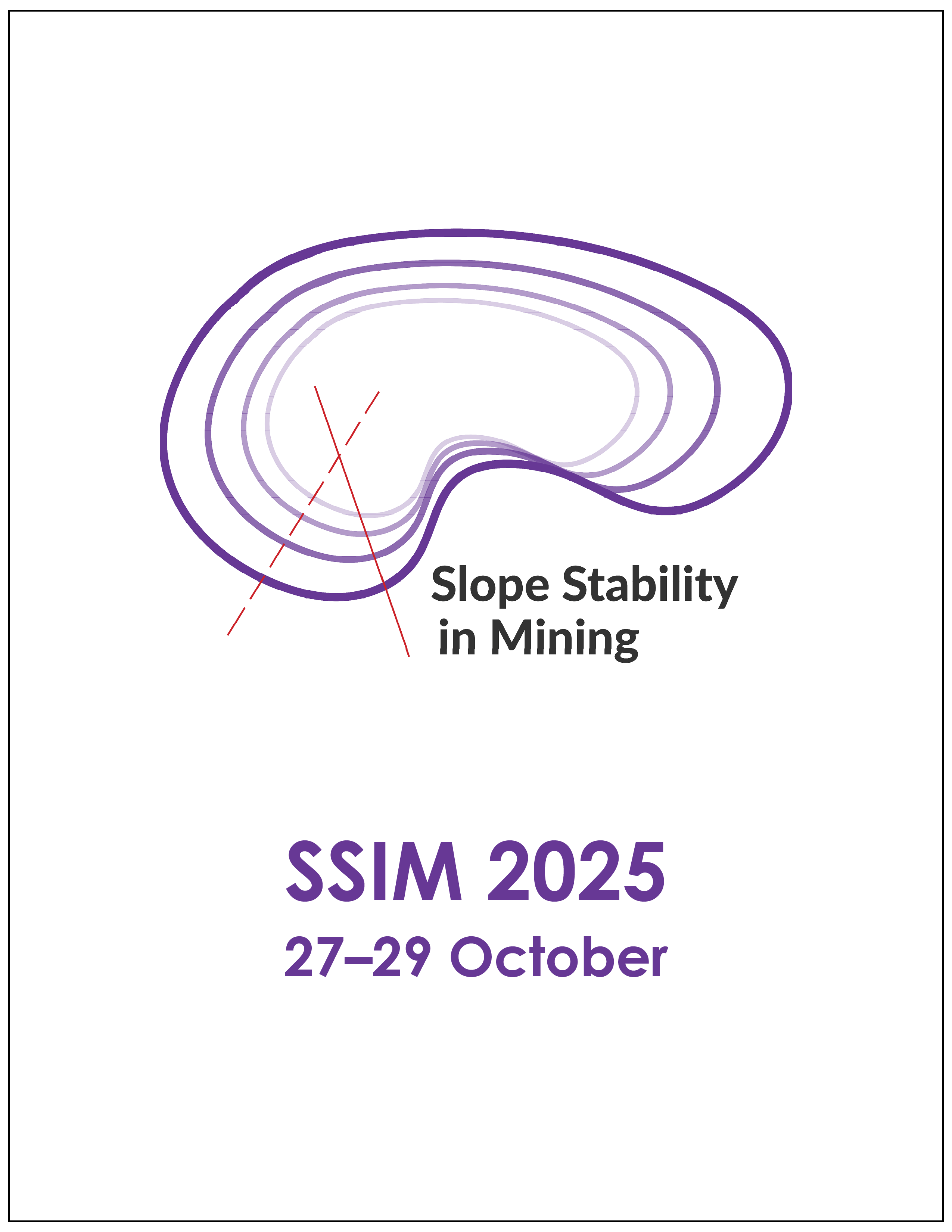Long-term instability of the East Archimedes slope failure headscarp: a case history

|
Authors: Easby, B; Mullenbach, J; Becker, R; George, T |
DOI https://doi.org/10.36487/ACG_repo/2535_21
Cite As:
Easby, B, Mullenbach, J, Becker, R & George, T 2025, 'Long-term instability of the East Archimedes slope failure headscarp: a case history', in JJ Potter & J Wesseloo (eds), SSIM 2025: Fourth International Slope Stability in Mining Conference, Australian Centre for Geomechanics, Perth, https://doi.org/10.36487/ACG_repo/2535_21
Abstract:
In late 2013, the south highwall of the East Archimedes open pit at the Ruby Hill mine collapsed after many months of detailed monitoring and analysis, leaving behind a near-vertical 90 m high headscarp. The south highwall consists of cemented alluvium that performed very well in previous phases of mining at slope angles steeper than 55°. The mechanism of failure was postulated to be due to deformation of the underlying intrusive rock in response to stress relaxation of the rock mass during mining, and shear strain localisation at the base of the alluvium resulting in a weakening of the materials at or near the contact between the alluvium and underlying rock. Since the initial slope failure, the headscarp remained near-vertical with relatively little additional deformation, with the exception of some surficial spalling and ravelling from the headscarp face. In 2021, additional mining was completed in the bottom of the pit, opposite the slope failure and headscarp. In the winter of 2022, nearly 9 years after the 2013 failure and approximately 3 months after mining in the bottom of the pit was completed, a substantial portion of the headscarp failed. Following, additional smaller failures of the headscarp in the same region occurred. This paper aims to review the mechanism of failure in the 2013 and 2022 events to better understand the relationship between mining in the pit and the stability of the headscarp.
Keywords: cemented, alluvium, instability, case history, Nevada
References:
ASTM International 2025, Classification of Soils for Engineering Purposes (Unified Soil Classification System (D2487-17), West Conshohoken.
Collins, B & Sitar, N 2011, ‘Stability of steep slopes in cemented sands’, Journal of Geotechnical and Geoenvironmental Engineering, vol. 137, no. 1,
Martin, CD & Stacey, PF 2013, ‘Pit slopes in weathered and weak rocks’, in PM Dight (ed.), Slope Stability 2013: Proceedings of the 2013 International Symposium on Slope Stability in Open Pit Mining and Civil Engineering, Australian Centre for Geomechanics, Perth, pp. 3–28,
Martin, CD & Stacey, PF 2018, ‘Chapter 6: cemented sediments’, Guidelines for Open Pit Slope Design in Weak Rocks, CRC Press, Boca Raton.
Skempton, A W 1964, ‘Long-term stability of clay slopes’, Géotechnique, vol. 14, no. 2, pp. 77–101.
Zobolotnii, E, Morgenstern, NR & Wilson GW 2022, ‘Asynchronous mobilization of shear resistance in slope failures’, ISSMGE International Journal of Geoengineering Case Histories, pp. 54–72,
© Copyright 2025, Australian Centre for Geomechanics (ACG), The University of Western Australia. All rights reserved.
View copyright/legal information
Please direct any queries or error reports to repository-acg@uwa.edu.au
View copyright/legal information
Please direct any queries or error reports to repository-acg@uwa.edu.au

